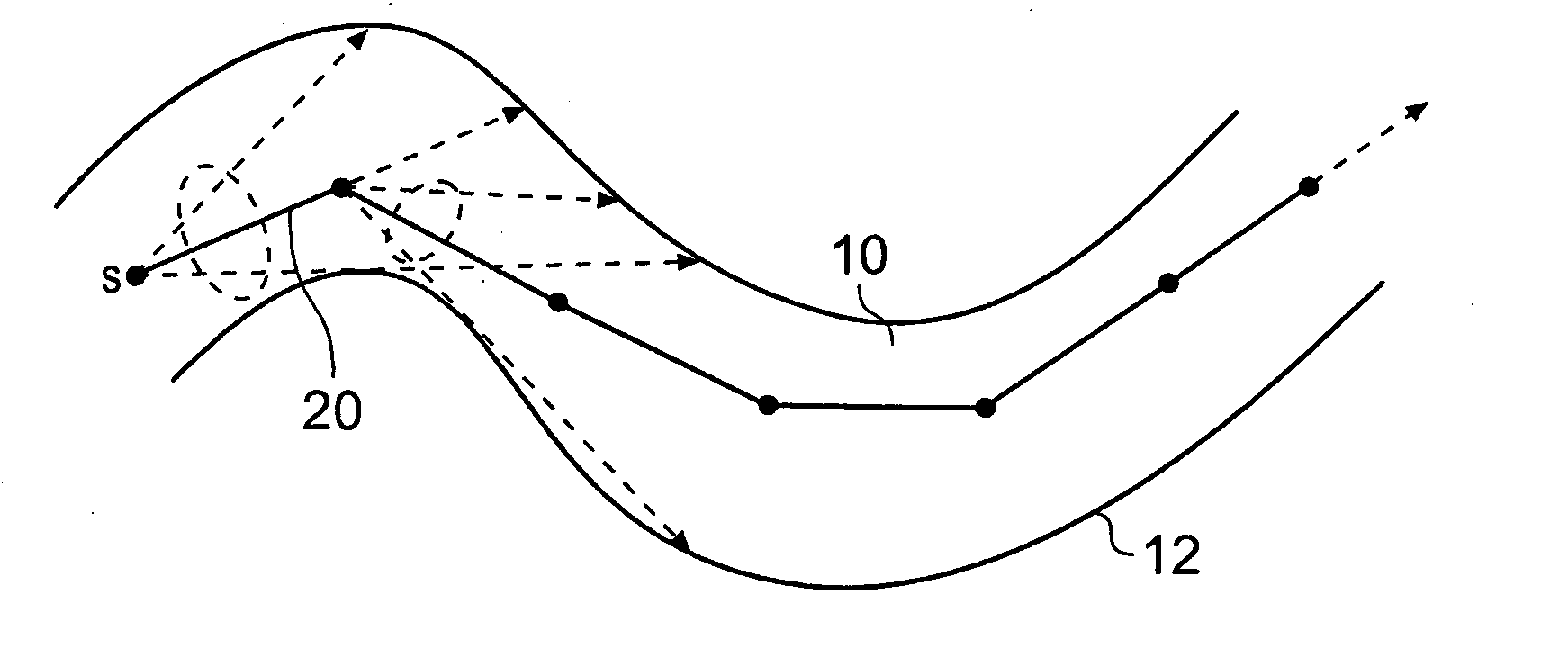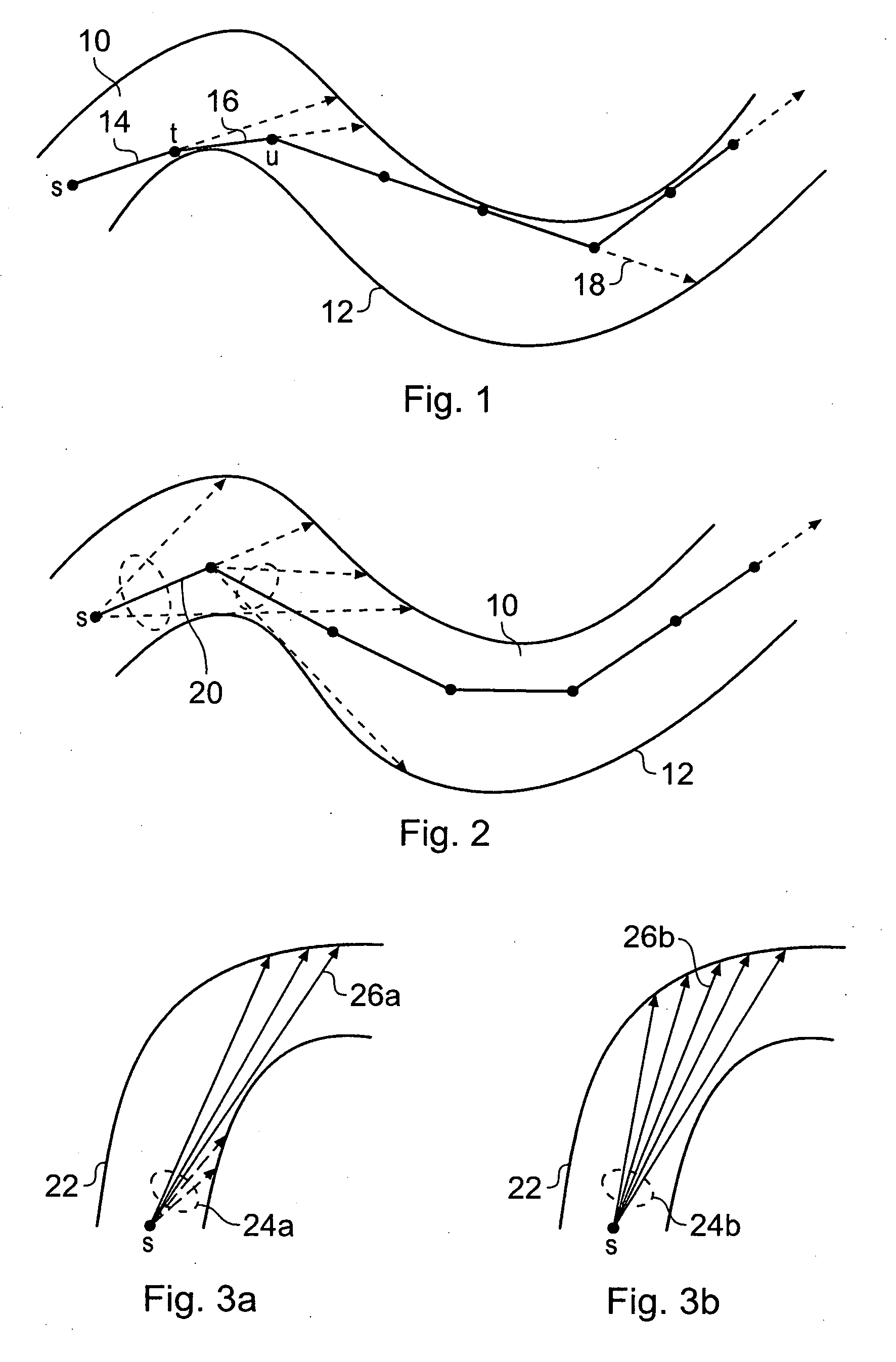Method for navigating a virtual camera along a biological object with a lumen
a technology of biological objects and virtual cameras, applied in the field of virtual cameras along biological objects with lumens, can solve the problems of difficult to give a high-quality real-time viewing experience, and achieve the effect of faster endoscopic examination
- Summary
- Abstract
- Description
- Claims
- Application Information
AI Technical Summary
Benefits of technology
Problems solved by technology
Method used
Image
Examples
Embodiment Construction
[0045] Medical imaging techniques such as computer-assisted tomography (CT), magnetic resonance imaging (MRI), ultrasound and positron-emission tomography (PET) produce large sets of data representing all or part of a patient's body. The data are typically collected in slices or layers through the patient's body, which are then assembled into a three-dimensional volume data set. The data set comprises a plurality of volume elements or voxels, arranged in a regular three-dimensional array. Each voxel has a value associated with a physical property (expressed in Hounsfield units, for example) that indicates the characteristics of the tissue in the corresponding part of the patient. Thus, voxels representing bone will have different values from voxels representing organs or muscles. Volume rendering, surface rendering or other image processing methods can be used to generate two-, three- or four-dimensional images of the patient from any viewpoint inside the data set.
[0046] One partic...
PUM
 Login to View More
Login to View More Abstract
Description
Claims
Application Information
 Login to View More
Login to View More - R&D
- Intellectual Property
- Life Sciences
- Materials
- Tech Scout
- Unparalleled Data Quality
- Higher Quality Content
- 60% Fewer Hallucinations
Browse by: Latest US Patents, China's latest patents, Technical Efficacy Thesaurus, Application Domain, Technology Topic, Popular Technical Reports.
© 2025 PatSnap. All rights reserved.Legal|Privacy policy|Modern Slavery Act Transparency Statement|Sitemap|About US| Contact US: help@patsnap.com



